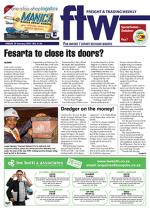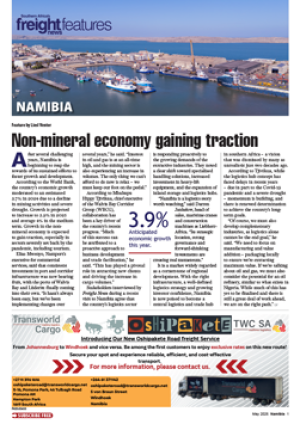While demand for
Zimbabwean tobacco has
dropped “significantly” in
traditional markets such
as Europe and the United
States, there’s growing
demand in emerging
markets such as China,
India and Brazil.
“While these emerging
countries produce their
own tobacco, their product
is low on f lavour and
nicotine. They therefore
need the strongly f lavoured
Zimbabwean tobacco to
blend with their product to
manufacture a high-quality
end-product such as cigars
and cigarettes,” said Dr
Andrew Matibiri, CEO
of Zimbabwe’s Tobacco
Industry Marketing Board.
He told FTW that
Zimbabwe’s
soil and
rich, diverse
landscape
produce
tobacco
leaves that
have a high
nicotine
content.
“China, as
the world’s
largest
tobacco
producer,
only needs
to import
a little of our tobacco to
blend with their product,”
he commented.
South Africa is also a
major export market for
Zimbabwe – importing
around 15% of Zimbabwe’s
tobacco leaves – to
manufacture cigarettes for
export as well as re-export
the leaves. “We are a
landlocked country, so if we
had to manufacture valueadded
end products such
as cigarettes, we would not
be able to compete on the
global stage as the price
of transportation would
shoot up
the prices of
our product.
South Africa
has the edge
on us with
that so we
focus on
farming a
good raw
product,”
Matibiri
pointed out.
The biggest
challenge for
Zimbabwe’s
tobacco
industry is to produce a
high quality tobacco leaf
that will fetch the highest
price per kilogram on the
market, he said. “There
are clear indications that
the small-scale farmers,
supported by contracting
arrangements, are
increasingly producing high
quality products and reaping
the benefits of a good
export crop,” said Matibiri,
especially as production
is steadily increasing and
the farmers can now afford
more labour and can invest
in machinery.
“The outlook for growth
in this sector looks good
and we are confident
of attaining the high
production figures of
2014 of over 216 million
kilograms,” he said, adding
that the price per kilogram
was expected to exceed last
year’s price by at least one
US dollar.
In the early 2000s,
tobacco production fell to
record lows of 48 million
kilograms. However, over a
decade later, production is
almost up to where it was
in the production boom
time of the 1990s. For the
coming season – the cured
product is expected to go
on auction by the middle of
next month – over 75 000
farmers have registered to
sell, said Matibiri.
INSERT & CAPTION
They need the
strongly flavoured
Zimbabwean tobacco
to manufacture a
high-quality end
product.
– Andrew Matibiri
CAPTION
Women working the fields on
a tobacco farm near Harare.
INSERT
Zimbabwe's top
5 tobacco importers
South Africa
China
Belgium
Hong Kong
United Arab Emirates

